

Since the 18th National Congress of the Communist Party of China, the Healthy China initiative has been fully implemented and people's healthcare has been comprehensively guaranteed. From promoting the long-term balanced development of the population to building and weaving a public health protection net, from strengthening the team of health professionals, to improving medical technical ability and quality...Over the past ten years, Pan Songgang, a photography journalist of China Population Daily, used camera lens to track and record the changes in the development of China's healthcare industry, and used vivid images to tell the story of how China has embarked on the road of healthcare reform and development with China characteristics.
This is a decade of great changes. People's well-being has been continuously improved, and the construction of Healthy China has engraved an extraordinary mark.
The past decade has witnessed the greatest progress in China's healthcare industry. The average life expectancy has increased from 74.8 years to 78.2 years. Faced with the increasing medical demands of people, the total amount of medical and health service resources continues to grow, with high-quality medical resources gradually spread to grassroot communities. Instead of centered with treating disease, in recent years the policies have been more focused on improving people's health. Meeting challenges and opportunities, China has provided its own answer and has opened up a broad road for healthy development.
Combating the coronavirus, China adheres to the "dynamic zero-COVID policy" and strives to control the pandemic in the shortest time and at the lowest cost, building a solid defense line for people's life safety and health.
Since the 18th National Congress of the Communist Party of China, China has deepened the top-level design of medical reform, promoted the high-quality development of public hospitals, further promoted the construction of diagnosis and treatment system, and promoted the construction of an orderly new pattern of medical treatment and diagnosis and treatment.
The National Health Commission has actively promoted the construction of family doctors in China to protect the health of the masses. All localities actively explore, adjust measures to local conditions, and provide personalized services for their residents. Grassroots medical and health institutions and the majority of medical workers continue to expand the service content, continuously improve the service quality, letting more people recognize the service.
The health system has carried out in-depth health poverty alleviation projects, ensured basic medical care for the rural poor, and helped nearly 10 million families who have returned to poverty due to illness to successfully get rid of poverty, making an important contribution to winning the final battle.
China has continuously optimized the birth policy, and has successively launched a series of supporting policies. National strategy responding to the aging of the population is implemented, the combination of medical care and health care is further promoted, and the construction of an elderly-friendly society is actively improved.
It is the rapid growth of all-round, multi-level and multi-pattern of health service that has brought great strategic opportunities to the construction of a healthy China. With the rapid economic development, health now is not only an important part of people's need for a better life, higher requirements are also raised for health management.
Over the ten years, numerous healthcare staff members have worked and struggled side by side, reflecting countless memorable moments on the road of health construction in the new era.
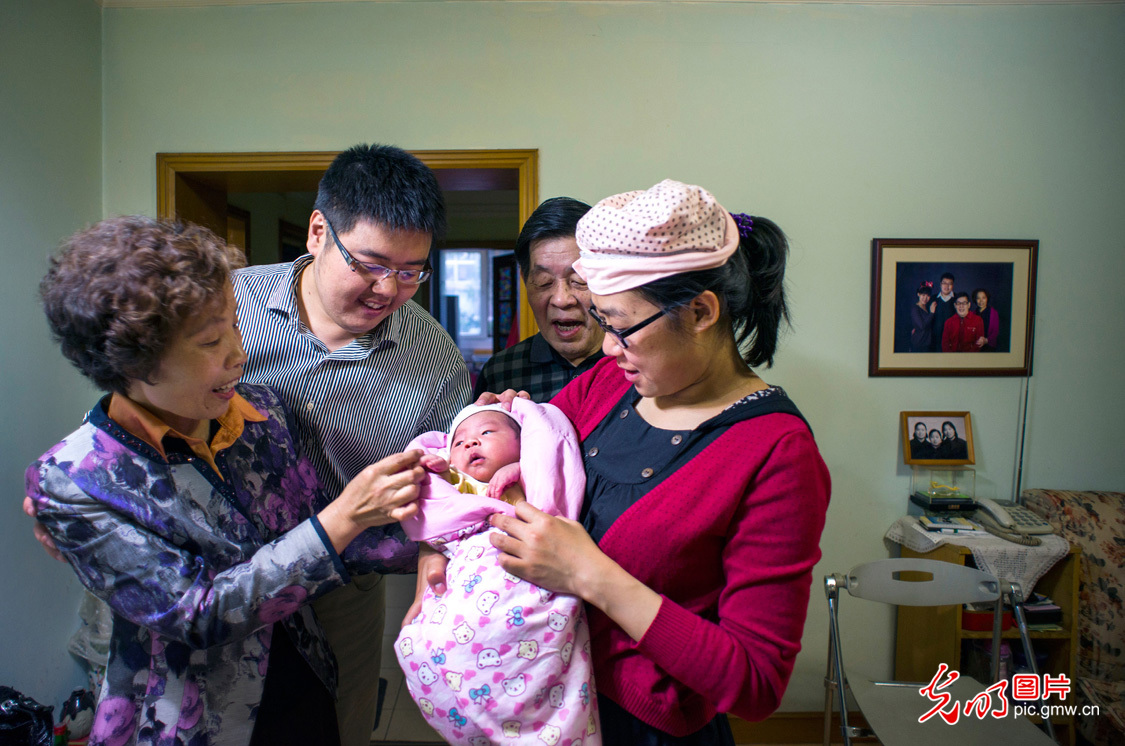
Photo taken on May 6, 2014 shows a couple holding their newborn daughter and sharing their happiness with the grandparents in Chaoyang District, Beijing, China's capital city. In 2013, the Third Plenary Session of the 18th CPC Central Committee decided to implement the selective two-child policy. On Dec. 28th, 2013, the Resolution on Adjusting and Perfecting the Fertility Policy was voted by the Sixth Session of the 12th the National People's Congress Standing Committee (NPCSC), and the selective two-child policy was officially implemented.
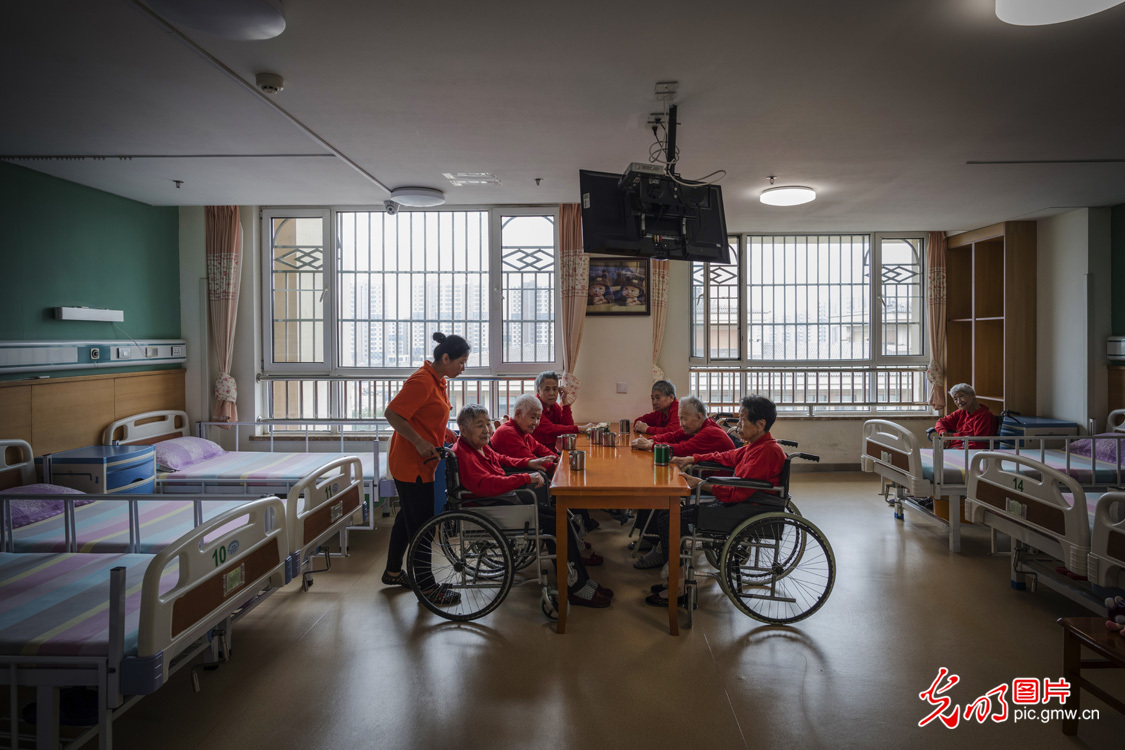
Photo taken on Sept. 14, 2018 shows the nursing staff helping the elderly drink warm water at the Chengyang District Social Welfare Center in Qingdao City, east China's Shandong Province. Over the years, various localities have actively explored a multi-level service system for the aged people, which is based on home, supported by the community, fully developed by institutions and combined with medical care, so as to provide healthy care for the elderly. At present, there are about 40 million disabled and partially disabled elderly people in China. During the "14th Five-Year Plan" period, China will focus on the health assessment of the disabled elderly and provide them with long-term care services from professional institutions to home communities.
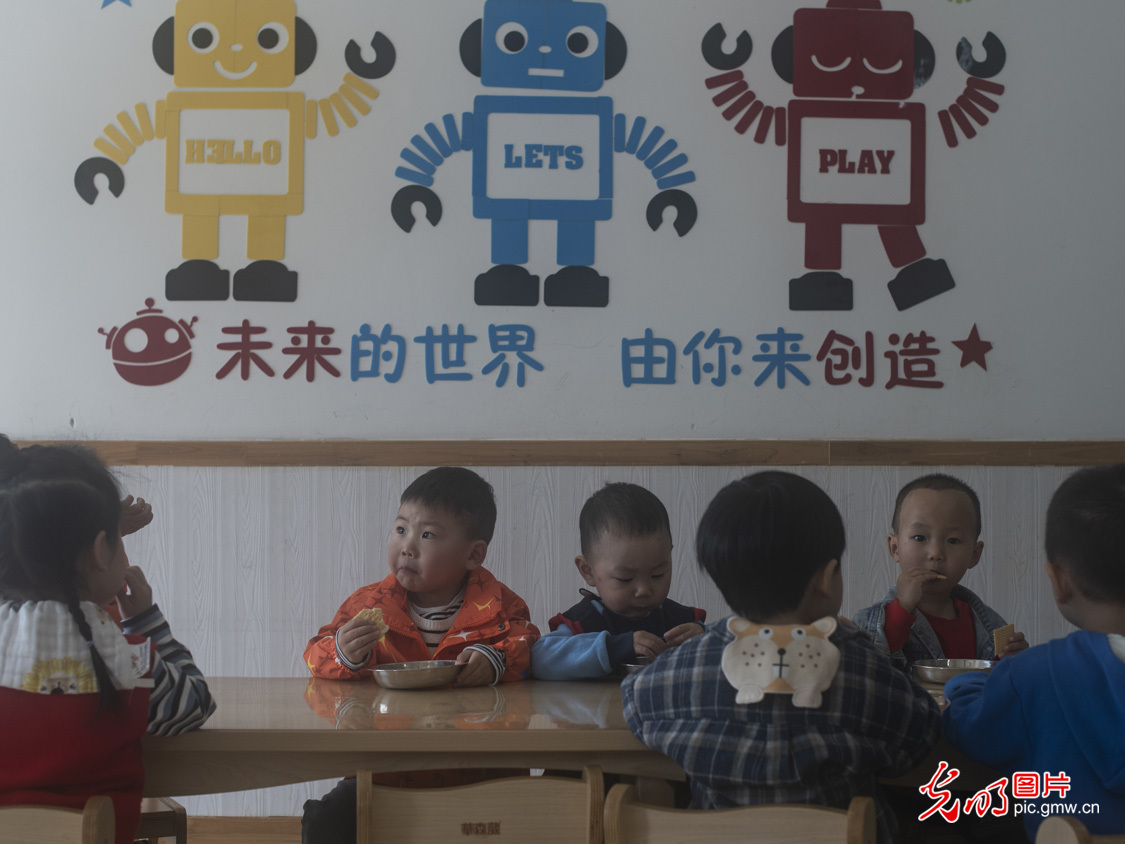
Photo taken on Apr. 21, 2021 shows children eating a meal at the Jinyayuan Nursery Center in Jiangyou City, southwest China's Sichuan Province. It is understood that the National Health Commission and the relevant departments have actively carried out the special campaign of inclusive nursery services, giving each newly-added nursery quota a subsidy of 10,000 yuan. In the past three years, the central budget has invested 2 billion yuan, with a total of 200,000 newly-added nursery quotas. By the end of 2021, the number of nursery quota per 1,000 people in China reached around 2.03.
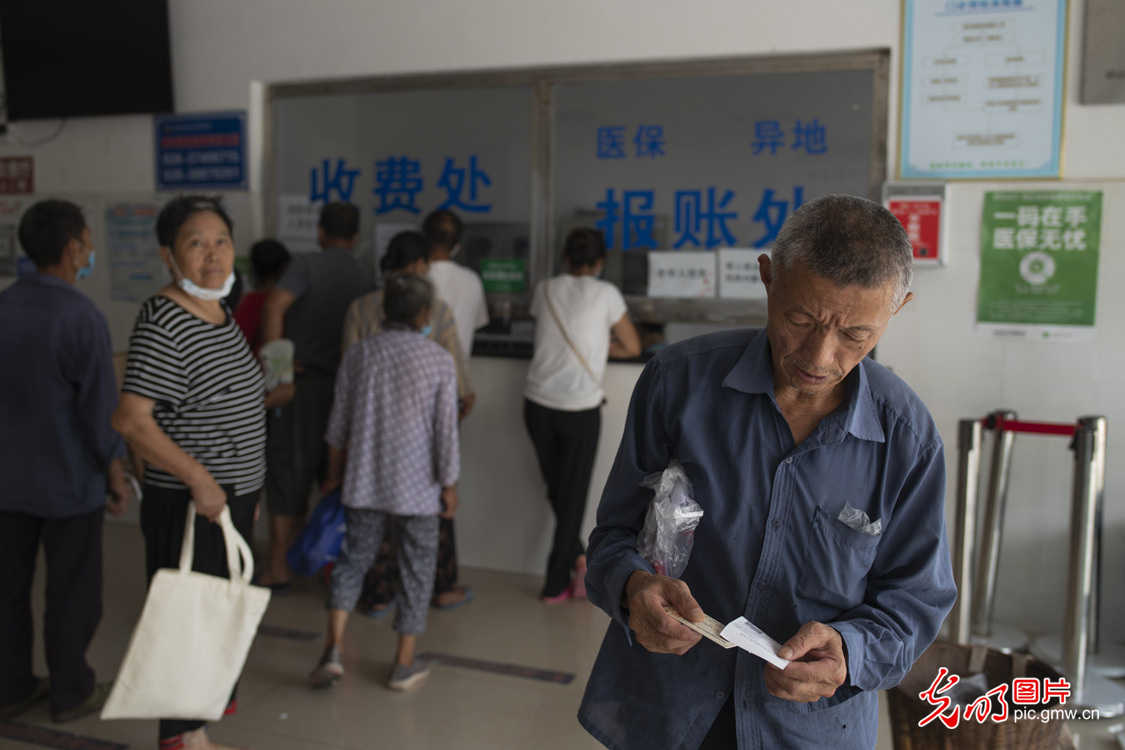
Photo taken on July 15, 2022 shows patients queuing at the medical insurance reimbursement office at Sanbao Health Center, Jiangjun Town, Hongya County, Meishan City, southwest China's Sichuan Province. In recent years, all qualified grass-roots institutions in China have been included in the new rural cooperative medical system, the current medical insurance for urban and rural residents, and the medical insurance for urban employees. It is more affordable and less expensive for the masses to see a doctor at the grass-roots level. The primary health care network has basically achieved full coverage, and the accessibility of services has been further improved. By the end of last year, there were nearly 980,000 grassroots medical and health institutions in China, including 35,000 township hospitals, 599,000 village clinics, and 36,000 community health service centers and service stations.

Photo taken on Aug. 6, 2020 shows a medical staff member getting to know a family's health demand in Jidiao Village, Chengtou Town, Fuqing City, east China's Fujian Province. In the past ten years, the total number of personnel in primary medical and health institutions in China has increased from 3.437 million to 4.432 million, and the proportion of practicing doctors and assistant doctors in village medical teams has increased from 18.5% to 41.5%. The contact and communication between doctors and patients have been strengthened, and the role of health education and guidance has been strengthened.
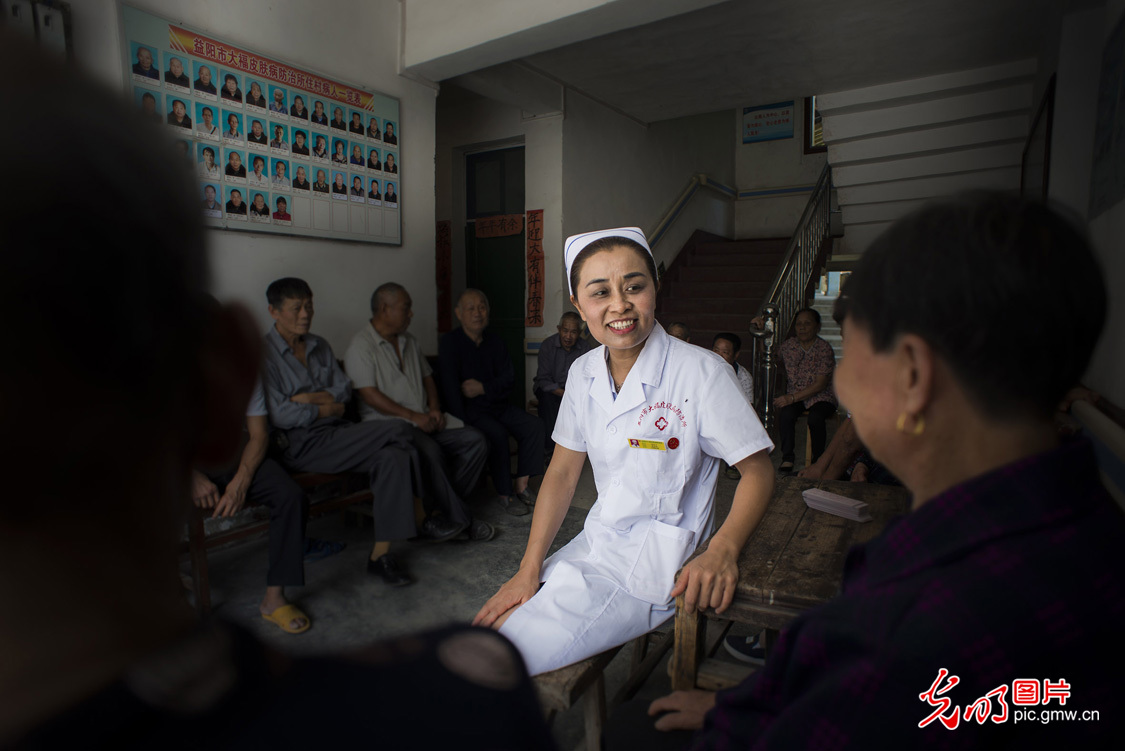
Photo taken on Sept. 8, 2017 shows a nurse talking with the leprosy recuperators at Dafu Dermatosis Prevention and Treatment Center in Yiyang City, cantral China's Hunan Province. Since 2019, the state has implemented a three-year renovation and upgrading project for rural nursing homes. For eligible elderly people who have recovered from leprosy in border areas, the problem of old-age care has been alleviated through home-based aging renovation, subsidies for old-age care services, and centralized support for extremely poor people. During the "14th Five-Year Plan" period, the National Health Commission has explored the development mode suitable for the low prevalence of leprosy, and has combined the security policy for the development of care services for elderly people to promote leprosy patients to have a sense of security and share a healthy and happy life.
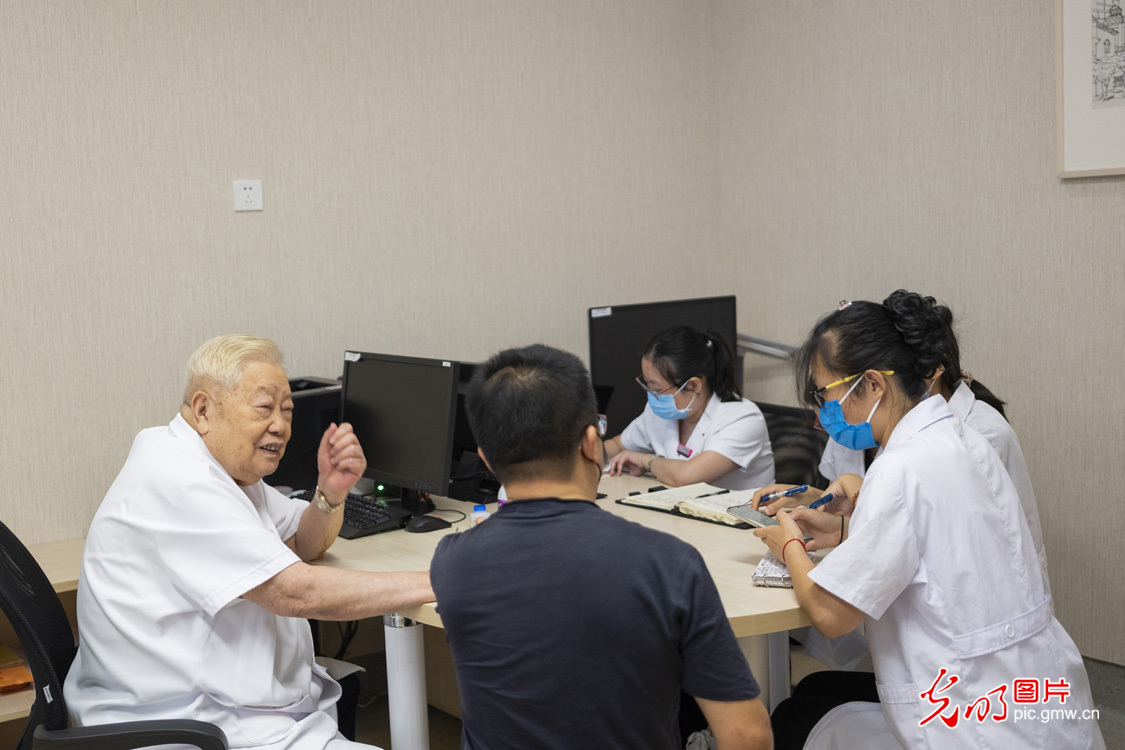
Photo taken on Sept. 9, 2022 shows an elderly medical master at China-Japan Friendship Hospital, who was in his 90s, still insisting on going out to the clinic and teaching students. He said, "As long as the society needs me and the patients need me, I can't leave the clinic." Over the years, China has continuously expanded the service function of traditional Chinese medicine, and the coordination mechanism between traditional Chinese medicine and western medicine has become more sound, which has better met the health needs of the masses of people.
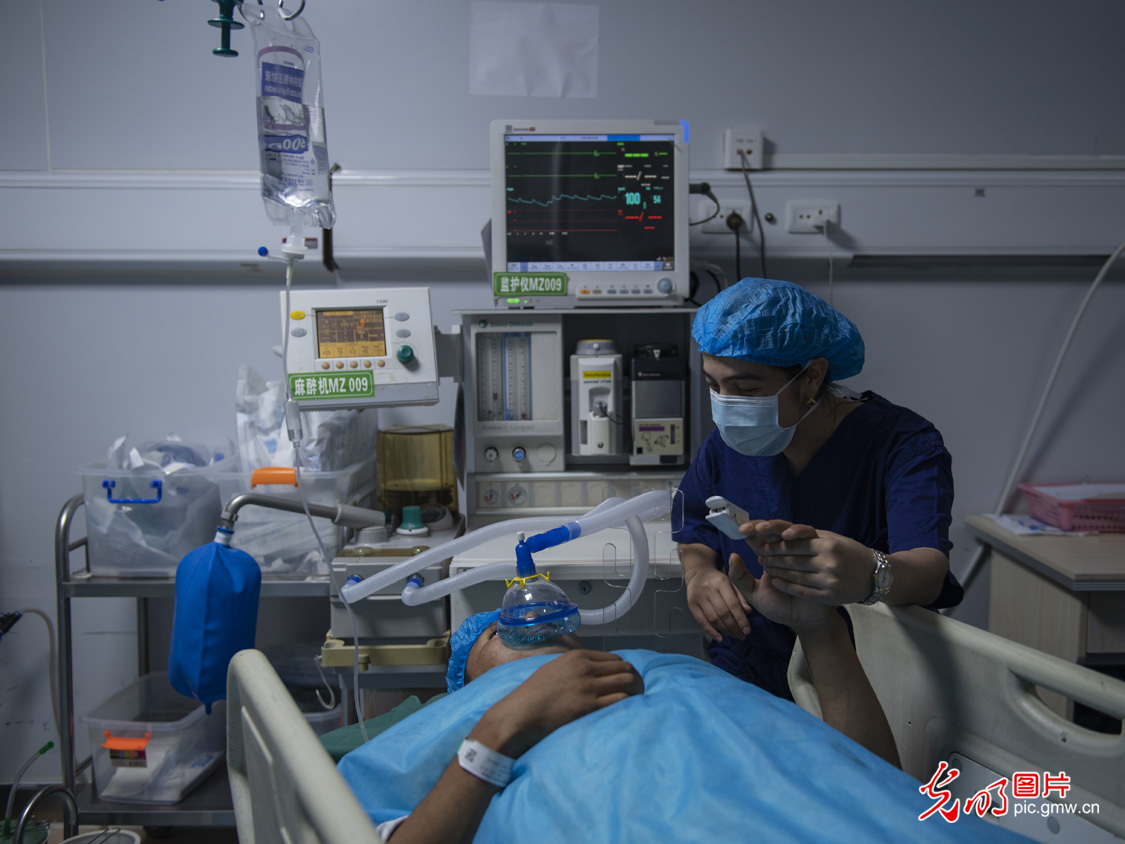
Photo taken on Aug. 6, 2022 shows an anesthesiologist looking after the patients at the People's Hospital of Kizilsu Kirgiz Autonomous Prefecture, northwest China's Xinjiang Uygur Autonomous Region. Since 2016, Jiangsu Province has successively sent a number of medical talents to the Prefecture to support, having effectively improved the medical service level of recipient hospitals and trained a large number of medical talents for recipient areas. Since the 18th National Congress of the Communist Party of China, the medical service capacity in Xinjiang and Tibet has been continuously improved, the personnel training has been more systematic and accurate, the hospital management system has been continuously improved, and the local people's sense of happiness has been continuously improved.

Photo taken on Nov. 8, 2019 shows the director of the ophthalmology department of Peking Union Medical College Hospital conducting disease screening for local patients at Windhoek Central Hospital in Namibia. Since the 18th National Congress of the Communist Party of China, China has sent numerous medical teams to developing countries in need, serving tens of millions of patients in recipient countries and carrying out nearly a thousand rounds of free clinic activities. Free cataract surgery has been carried out in more than 30 countries, helping more than 10,000 patients rebuild their sight. Chinese doctors have brought great love and affection with their superb medical skills.
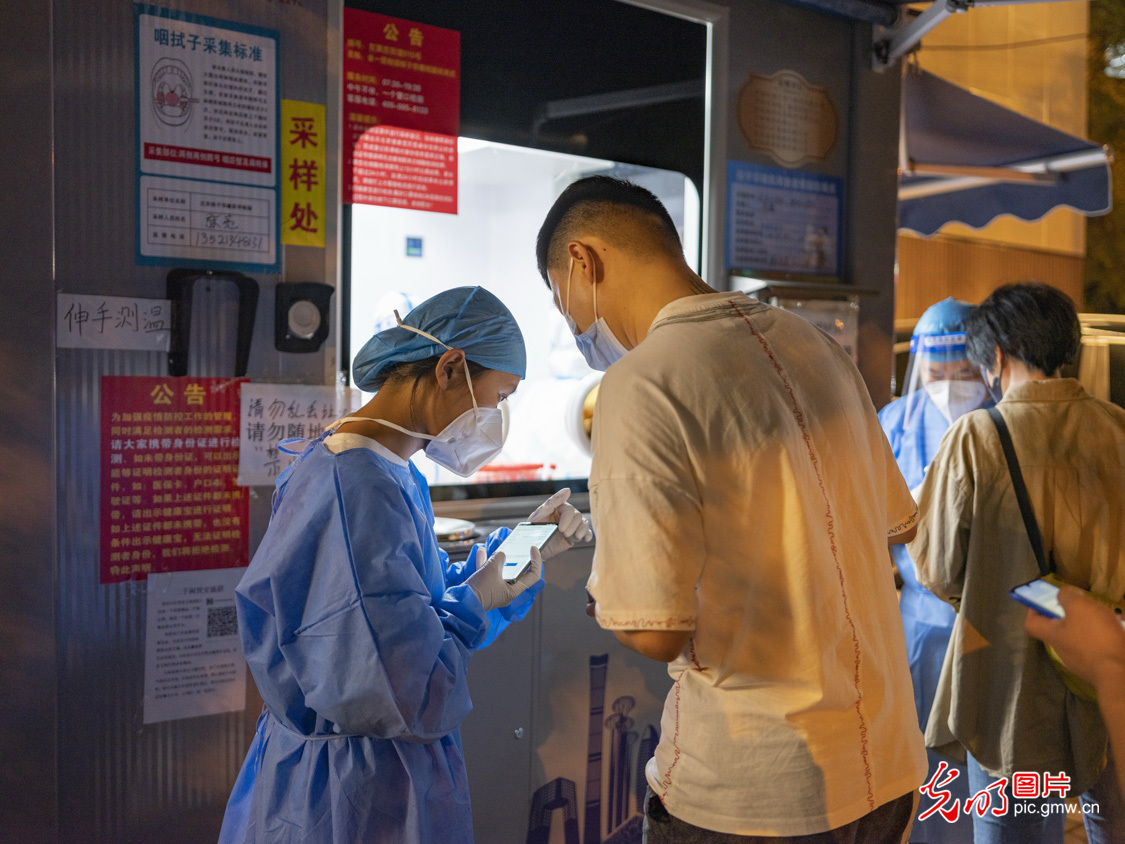
Photo taken on Sept. 18, 2022 shows residents taking nucleic acid test in Zuojiazhuang, Chaoyang District, Beijing, China's capital city. China adheres to the supremacy of putting people and life first, and takes strict pandemic control measures in areas with covid cases, while ensuring the normal production of most areas in the country and the stability of supply chain. Prevention and control policies are constantly optimized according to the time and place to guarantee the coordination of pandemic control and social development.
点击右上角![]() 微信好友
微信好友
 朋友圈
朋友圈

请使用浏览器分享功能进行分享
